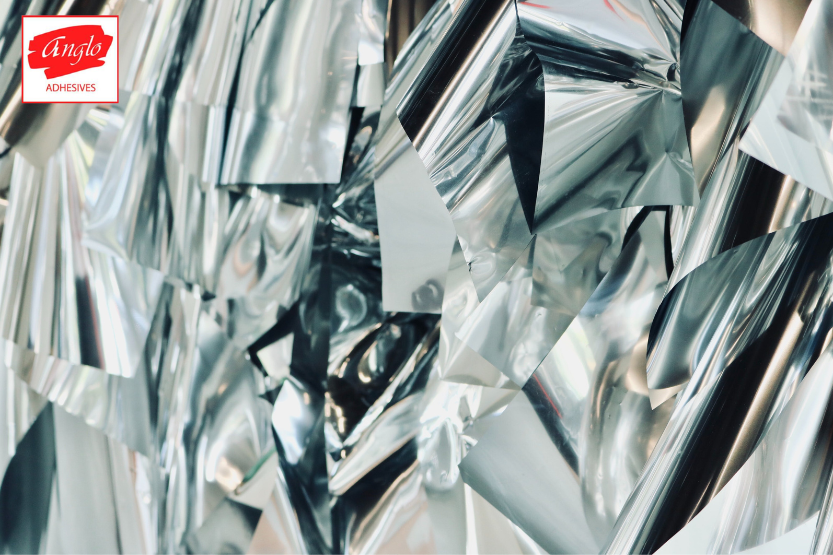Blog
What is the best glue for aluminium?

What is the best glue for aluminium? When looking to bond aluminium, it is important to keep in mind that aluminium surfaces often have a weak, invisible oxide layer. Just wiping with a solvent cleaner is not usually sufficient if a high bond strength is sought. Adhesives bond well to the oxide layer; however, the oxide layer isn’t bonded well to the aluminum. It often looks as if the adhesive bond has failed, but on close inspection, it is clear that the oxide layer has just come off the aluminium. Aluminium is a material that is frequently used in many industries, from construction to crafting, because of its lightweight and sturdy qualities. When it comes to bonding aluminium surfaces, selecting the best glue for aluminium is crucial for achieving a secure and lasting connection.
Surface Preparation
Although solvent wiping in itself isn’t adequate, it is important to solvent wipe before abrading or grit blasting the surface to avoid pushing the oils or impurities into the fresh aluminum. After treatment, wipe the surface again to remove any debris.
There are a variety of solvents available to consider. Acetone, isopropanol, and Permabond Cleaner A are all suitable. Avoid white spirits or meth, as they can leave residue.
Now we are ready to bond the aluminium.
What is the best glue for aluminium?
Aluminium (or aluminium, if you prefer) is a soft, lightweight, light-grey metal. Most aluminium is made into an alloy to enhance its properties. The type of aluminium will affect the bond strength and adhesive selection. For detailed information on each type, contact Anglo Adhesives.
Anaerobic adhesives are suitable for close-fitting concentric parts or threaded components. Anaerobic adhesives require active metal to cure; aluminium is passive.
- Cyanoacrylate, also known as instant adhesives, super glue, crazy glue, ca glue, etc. All grades will bond aluminium well.
- Single-component epoxies are ideal for bonding aluminium.
- Two-component epoxies also form strong bonds with aluminum. For thin-panel aluminium bonding, they minimise or eliminate read-through (show-through). Where extremely high shear and peel strength are needed.
- Structural acrylics are very strong aluminium bonders.
- UV-curable adhesives are a good choice, providing light can reach the entire bond site.
With so many choices of adhesives for aluminium, the desired cure process, the desired environmental resistance, and the desired temperature resistance are key factors in choosing the best adhesive for each application. Choosing the best glue for aluminium depends on various factors, including the intended application, required bond strength, and environmental conditions.
Considering the best glue for aluminium
The process of selecting the best glue for aluminium is a critical aspect that involves careful consideration of various factors. Understanding these considerations is essential to achieving optimal bond strength and durability in diverse applications. Selecting the best glue for aluminium ensures that your projects remain secure and durable, meeting the demands of diverse industries and applications.
Firstly, the type of aluminum used plays a pivotal role in determining both bond strength and the appropriate adhesive. Whether the aluminium is in the form of an alloy or is pure can significantly impact the bonding process. For comprehensive information tailored to the specific aluminum type, it is recommended to consult adhesive experts, such as Anglo Adhesives, who can provide detailed insights and guidance.
When delving into adhesive selection, several crucial factors come into play. One such factor is the desired cure process. Different adhesives may require specific curing conditions, and aligning the adhesive choice with the intended cure process is paramount for a successful bond. Additionally, considering the environmental conditions to which the bonded materials will be exposed is crucial. Adhesives with resistance to environmental factors such as moisture, temperature variations, and chemicals ensure the longevity and reliability of the bond. Choosing the best glue for aluminium depends on factors such as the application requirements, desired bond strength, and environmental conditions.
Successful bonding of aluminium
Temperature resistance is another vital consideration in adhesive selection. The operating conditions and temperature range of the application should be thoroughly assessed to choose an adhesive, like the best glue for aluminium, that can withstand these conditions without compromising bond integrity. This foresight prevents potential bond failures due to temperature-related stress.
The successful bonding of aluminium involves not only meticulous surface preparation but also the strategic selection of an appropriate adhesive. Despite the challenges posed by the weak oxide layer on aluminium surfaces, the best glue for aluminium or right adhesive, chosen based on the type of aluminium and specific application requirements, guarantees a robust and enduring bond. With a myriad of adhesive options available, each boasting unique properties, manufacturers have the flexibility to tailor their choices to precisely meet the demands of their aluminium bonding projects. By considering factors like aluminium type, cure process, environmental resistance, and temperature resistance, industry professionals can make informed decisions, ensuring the longevity and effectiveness of aluminium bonds in diverse applications. Armed with this information, you’re well-equipped to choose the best glue for aluminium and use it effectively, ensuring the success of your bonding projects.